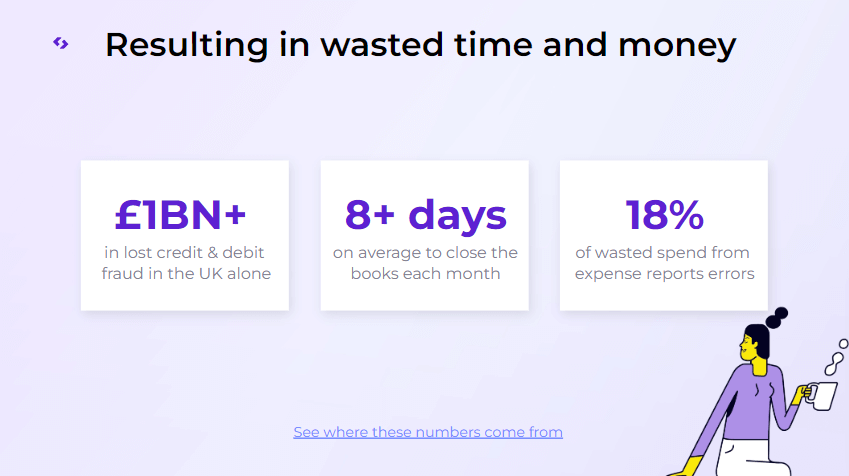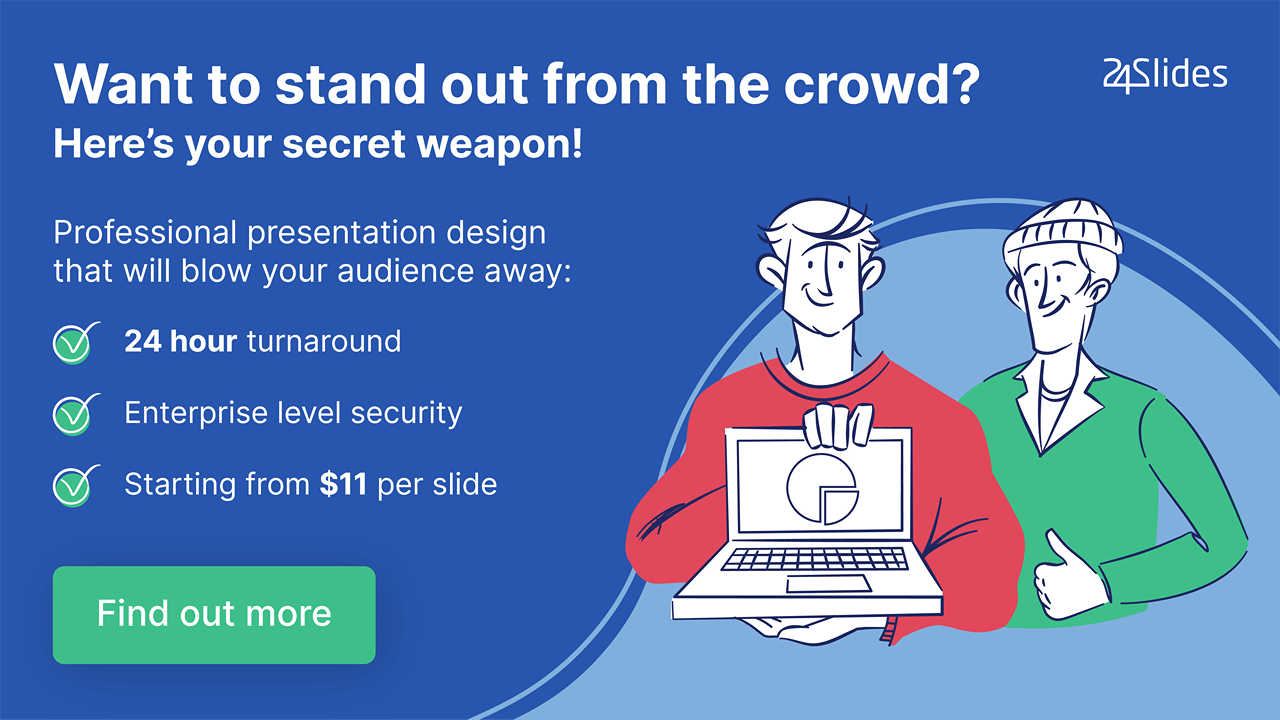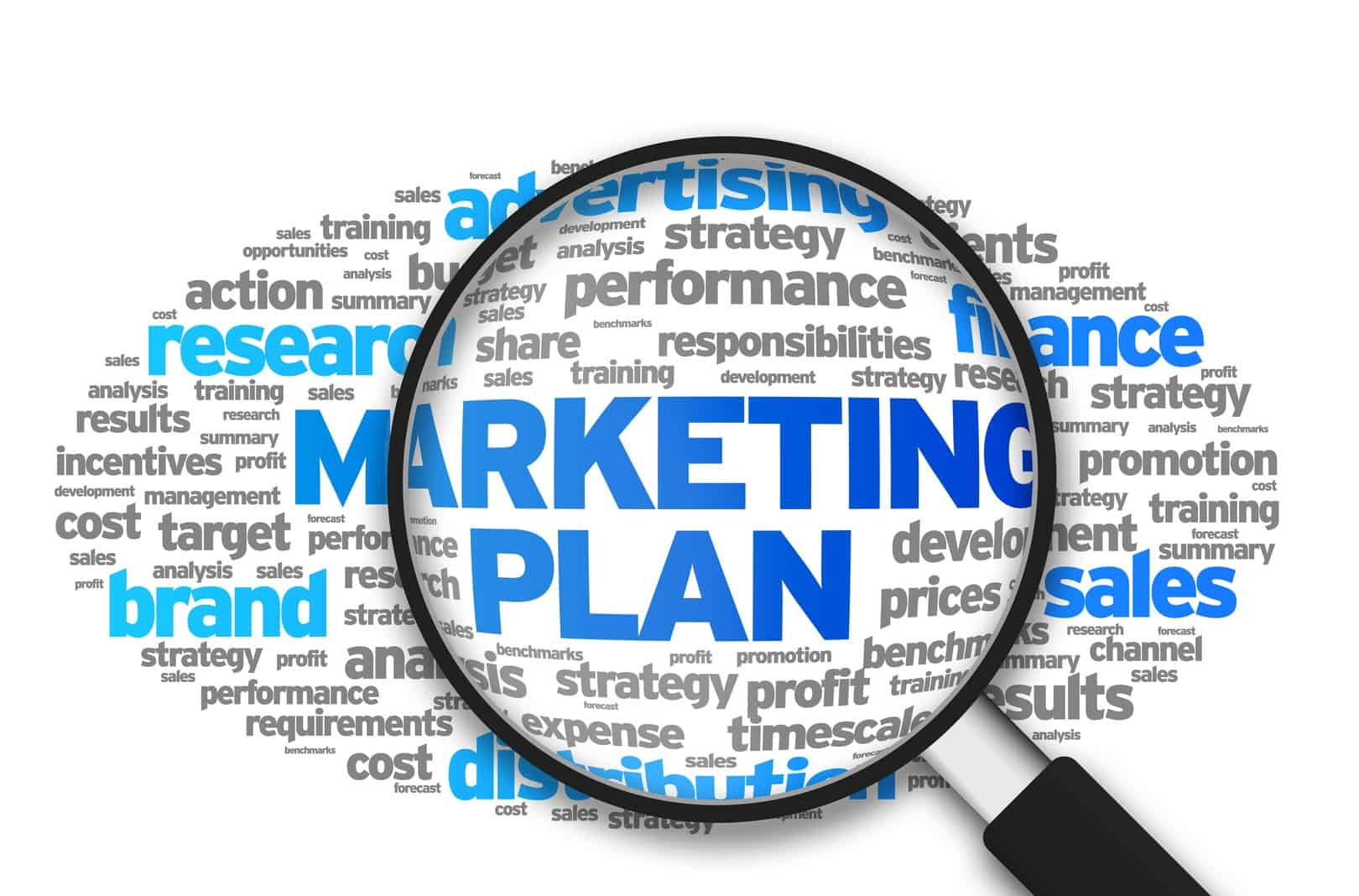Learn How to Start a Sales Presentation
The opening of a sales presentation is key, as it can determine its outcome. How you start a sales presentation will influence your audience’s impression of you. It can influence them positively towards what you’re going to say afterward, or on the contrary, make them decide that they’re not interested at all.
We know how important the start of your sales presentation is for your business’s success, and we want to help. That’s why we interviewed our Head of Sales, Robert Juul Glaesel, to give you the BEST tips and insights on making a strong first impression with your sales presentation’s opening. Let’s get started!
We’ll go over:
- How to start a sales presentation: Why first impressions matter
- How should you begin a sales presentation? Let’s check out what our experts are saying
Let’s begin! Or, feel free to skip to your preferred section.
How to start a sales presentation: Why first impressions matter
Research shows that first impressions are usually built between the first 7 to 10 seconds of meeting someone. And sales presentations are no exception to this rule! The opening to your presentation can definitely play a key role in how effectively you close business deals.
The beginning of any presentation has a strategic significance. It defines how the rest of your presentation is going to be read by your audience. The start of a sales presentation can help you convey trustworthiness and professionalism and make the rest of your presentation more credible.
Learning how to start an effective sales presentation is all about connecting with your audience. The more engaging you are, the more likely they will be positively predisposed to the rest of your presentation.
How should you begin a sales presentation: Lets check out what our experts are saying
There is no one true formula for how to start a successful sales presentation. Like most things, it can depend on many different factors. For example, the previous relationship you have with your audience, what kind of product or service you’re offering, how far into the sales funnel you’re working on, and so on. All these elements come into play when creating the perfect opening for your sales presentation.
Let’s take a look at some insights from Robert, our head of sales so that you can put them into practice in your next sales presentation:
Insight #1: Show curiosity
It’s important not to give the impression that you are going head-on to sell but that you genuinely care about the customer. How can you show that you care? First, give yourself some space at the beginning to show curiosity and see if they could actually benefit from your product or service.
Start by asking questions to see if they are the right prospect and if they are similar to your other success stories. As Robert says:
“First, you talk to the customer to understand their situation and see if they are experiencing the same kind of needs as other customers you’ve seen.”
You could ask these questions:
- How do you typically approach this situation or challenge in your organization?
- Could you share more about your business's usual process when dealing with [specific issue]?
- In your experience, is [the problem you’re discussing] something you see in your business?
- Have you identified any specific needs related to [the issue]?
Curiosity allows you to see if you actually are a good fit, and it allows you to create a good bond with your prospects from the start, as they feel that you’re really trying to understand them. As Robert mentions:
“They don’t feel like you’re just jumping in and trying to sell them something. They see that you ask them questions, challenging questions. It’s key that they feel like you’re asking them those questions to really understand their situation.”
Only when you have a clear picture of their business and needs, and their need actually fits with what you want to sell them, then you can start talking about solutions.
Insight #2: Create trust

Building trust is another of the best ways to start a presentation. For many salespeople (most, actually), their approach to selling is to push their solution, regardless of whether it will actually be valuable to their prospect. This way, they come across as untrustworthy, showing they only care about selling and not about improving the potential customer’s business.
Now, how can you get your prospect to trust you? Robert mentions a couple of ways:
- Show that you are incredibly competent about what you’re talking about
Obviously, you must show that you deeply understand your business: you know exactly how it works, the processes, the features, costs, etc. However, it goes beyond that; your speech should also reflect that you understand your audience. Avoid sounding like you’re repeating a rehearsed script, and instead, customize your message to them.
Demonstrate that you've done your homework by knowing:
- Their specific industry
- Their brand values and mission
- The pain points they probably face
- Their target audience
- Show that you are willing to put the collective over your own needs
It is crucial to show you’re not only interested in selling but that you’re really invested in helping them deal with their pain points. You should express that solving your prospect's need is more important to you than your need to sell. In Robert’s words:
"Instead of pushing your product, your message should be, "I don't want to sell you something; I rather want to improve your business." Because I don’t only care about selling something, but that it provides real value."
This should be a key message from the start of your sales presentation in order to foster trust. Let it be clear that you getting some revenue is a byproduct of them being more successful at whatever they want to achieve.
Something to keep in mind…
Along with being trustworthy comes the acknowledgment that sometimes, the prospect might not be a good fit for your product. It's essential to communicate this openly, promoting transparency. You can express it like this:
"You know, this solution may not be the best fit for you; having [your product] might not be ideal unless you [meet certain conditions]. Our goal is to provide you with something that truly benefits you.”
While it may not be the most pleasant conclusion, it's important to be honest. In such situations, you should keep looking for examples where your product aligns seamlessly, much like the success stories you've previously encountered. Remember, for a successful sale, there must be a match.
Insight #3: Connect your audience with a need
Another successful way to start a sales presentation is to connect your prospect with a need. How can you do this? Let them see a problem, a shift in the industry, or an undeniable transition. Present it as something they're definitely going through or will be soon. You can use Zuora’s first sales presentation slide as guidance:

This will allow you to swiftly present your service or product. Once they have recognized and accepted the need or pain point, you can start discussing your products as a solution, and it will come on as a logical answer to their problem. As Robert says:
“When the person recognizes that it will be a problem for their business, then they will be motivated to find a solution. They will start getting uncomfortable, thinking their company might face trouble soon, and getting eager to solve it. That's when... voilà, you step in and show them how you can solve it."
In this way, you are not pushing a product or forcing a sale, but rather, you are making them connect naturally. When you talk about your product or service, they are already looking for a solution. In Robert’s words:
“The best way to approach sales is to tie their needs together with your solution.”
Insight #4: Use storytelling techniques
Using storytelling is a good option for tackling how to start a sales pitch presentation. Storytelling gives a presentation an emotional charge and makes the audience feel closer to the issue presented. Stories can enhance a message and illustrate a point. And, they can also help you break the ice and make yourself feel closer to your audience.
These are some ideas of stories you could tell in your sales presentation introduction:
- Your customer reviews
- The employees’ success stories
- Your company’s mission
- Challenges you’ve overcome with your team
However, it’s important to remember that storytelling should be carefully planned out. It’s not just about sharing any emotional story; it should be strategically crafted to connect with your goal. You need to be clear on WHY you’re telling your story and HOW you’ll tailor it to a specific audience to promote a particular course of action.
Shawn Achor’s TEDTalk is the perfect example for those looking for examples of how to use storytelling to begin a presentation.
You might also like 7 Essential Storytelling Techniques for Your Business Presentation
Insight #5: Share statistics

Statistics can be a powerful tool to start your sales presentation with. They can help you show your value proposition, create a sense of urgency, and really connect your prospects with a pain point. Likewise, they demonstrate your commitment to thorough research and investigation, showing dedication to understanding their needs.
You can use statistics to prove how your product or service can improve your prospect’s performance and save them time or money. Check out how Spendesk is doing it:

Check the complete presentation for a sales presentation introduction example.
However, there are some things to keep in mind about starting your presentation with statistics:
- Make sure to show where your numbers came from. Like in the example, you should definitely cite your sources; they could be articles, research, a study, or a poll you conducted. Remember to ensure that you use reliable sources.
- Be careful about using too many statistics: Use just enough statistics to prove your point, but not too much that you bore the audience and end up sharing irrelevant information. You could end up distracting and distancing them from the main message.
Insight #6: Add an inspiring quote
When thinking about how to start your sales presentation, a quote might be an idea to consider. Especially when it comes from a renowned source, a quote can help give authority to your presentation. Letting your audience read and reflect on the quote can be a great starting point for a more engaging, participative presentation!
Check out the quote that Klima starts their presentation with. Just from the first slide, you can feel that your company, and the world, will be better once you start using their product:

Click here to view another great sales presentation introduction example.
Insight #7: Engage with your audience
Building rapport with your audience is one of the most effective ways to get them to listen to you. PowerPoint offers a wide array of options for making a presentation more engaging. Polls and quizzes are a great option to make your audience feel like an active participant.
How can you engage with your audience? Encourage them to talk, you can say something like:
“Feel free to jump in with any comments or questions at any time…”
“It would be great for this presentation to be a discussion…”
“You’re the experts in your business here, so feel free to share your insights..”
By opening your presentation this way, you’ll not only create a more friendly environment by inviting them to participate in the presentation, but also make them more receptive to learn more about the potential solutions you’ll offer.
You might also be interested in how to improve your business presentations.
The beginning of your sales presentation can determine the outcome
Preparing a sales presentation takes time and effort, and there’s no easy way around it. If you want to get the results, you must work on it first! There’s no one magic formula for learning how to start a sales presentation. But putting some work into it will definitely pay off. Whether through a quote, a story, or a poll, engaging your audience will help you get a better disposition toward the rest of it.
Don’t forget that the visual elements also play a huge role in your sales pitch first impression. Just like you should invest some time and effort in looking as polished and professional as possible, the same goes for your PowerPoint! Your presentation slides can become an exceptional tool to convey your message more effectively. Professional custom PowerPoint design can help you get outstanding results you couldn’t achieve on your own.
And, it’ll free you some time to invest in improving your delivery and content! Learning how to start a truly outstanding sales presentation is a process of trial and error. It’s all about defining your personal style, what works best for you and your product, and what values and messages you can convey through your slides.

Want to learn more?





